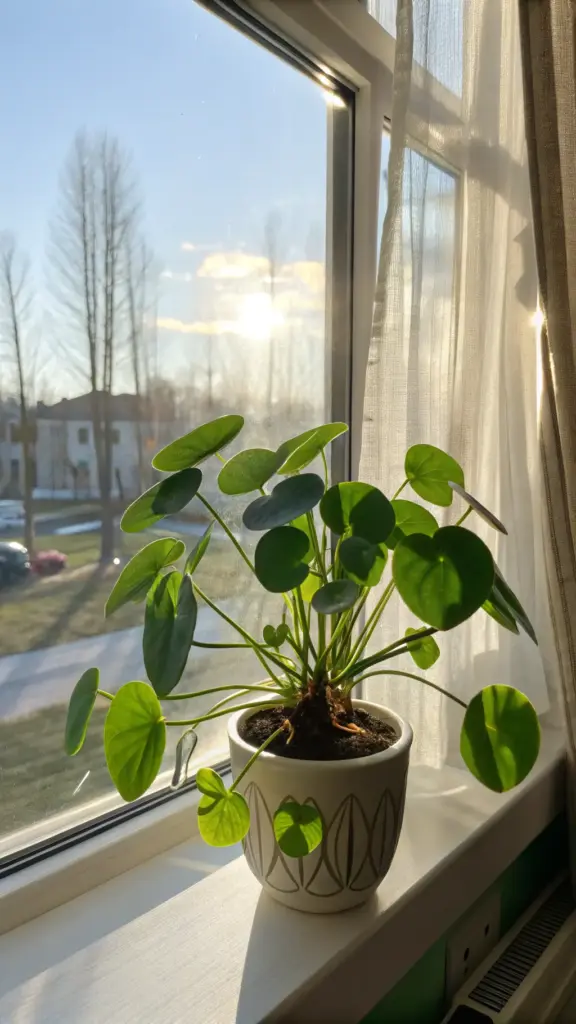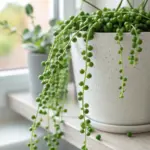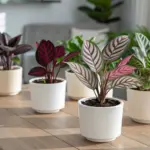3. They Master the Art of Light Positioning

I used to think bright light meant sticking my Chinese money plant right in the sunniest window possible. Boy, was I wrong about that one!
My first Pilea got completely sunburned within a week – crispy brown leaves that looked like tiny potato chips. Not cute at all.
Light positioning is honestly an art form that took me months to figure out. But once I cracked the code, my plants started thriving like never before.
The Sweet Spot for Maximum Growth
Here’s what I’ve learned after frying way too many plants: bright, indirect light is the magic formula. Think of it like filtered sunlight through a sheer curtain.
My best-performing Pilea sits about 3 feet from an east-facing window. It gets gorgeous morning light but avoids the harsh afternoon sun.
North-facing windows are actually perfect if you’ve got them. The light is consistent all day without being too intense.
I measure light with a cheap phone app now – my Chinese money plants love around 200-400 foot-candles. Sounds fancy, but it’s just bright enough to read comfortably.
The Weekly Rotation Game-Changer
This tip from a nursery owner completely transformed my plant’s shape. Every time I water (about once a week), I rotate the pot a quarter turn.
Without rotation, my Pilea was growing lopsided and leaning toward the window like it was trying to escape. Now it grows perfectly symmetrical.
Consistent rotation creates those Instagram-worthy round, full plants you see everywhere. It takes literally two seconds but makes such a huge difference.
I put a little piece of tape on one side of the pot so I remember which way to turn it next.
Strategic Window Placement by Season
Summer placement is tricky because the sun gets so intense. I actually move my plants further from south-facing windows during June through August.
My winter setup is completely different – I move them closer to windows since the sun is weaker and the days are shorter.
East windows are my go-to year-round because they get gentle morning light without the scorching afternoon heat. West windows can work but need more distance.
I learned this seasonal adjustment thing after wondering why my plants looked stressed every summer despite “perfect” care.
Grow Lights That Actually Work
When I moved to an apartment with terrible natural light, I thought my plant hobby was over. Then I discovered full-spectrum LED grow lights.
The key is getting lights that are 24-40 watts and keeping them about 12-18 inches above the plant. Closer than that and you’ll burn the leaves.
I run my grow lights for 12-14 hours during winter to make up for the short days. My timer outlet was the best$15 I ever spent.
Those purple “blurple” lights look cool but don’t work as well as white full-spectrum LEDs for Chinese money plants.
Protecting from Harsh Direct Sunlight
Direct sunlight is basically kryptonite for Pilea leaves. I learned this when I put a plant on my sunny patio for “fresh air.”
Within hours, the poor thing had white bleached spots that never recovered. Direct sun literally burns holes in the leaves – it’s not pretty.
If your only bright spot gets direct sun, use a sheer curtain or move the plant back from the window. Even morning direct sun can be too much.
I keep a spray bottle nearby during summer to mist around (not on) the plant if it seems stressed from heat.
My Biggest Lighting Mistake
I once thought more light always meant better growth, so I put my Pilea under a super bright desk lamp. The leaves turned pale yellow and growth completely stopped.
Too much artificial light can be just as bad as too little. These plants want consistent, moderate light – not intense blasts.
Now I use that same desk lamp but keep it much further away and only during the darkest winter months.
Ready to learn the propagation timing secrets that help nursery owners create endless baby plants? Click “next” to discover when and how to multiply your Chinese money plant collection like a pro!









GIPHY App Key not set. Please check settings